
Developed for the Ford Foundation's Building Economic Security Over a Lifetime Initiative (BESOL)
"The Color of Wealth in Los Angeles" is the first report to compile detailed data on assets and debts among people of different races, ethnicities and countries of origin residing in the Los Angeles area. Researchers from UCLA, Duke University and The New School, with support from the Federal Reserve Bank of San Francisco and the Insight Center for Community Economic Development, analyzed data on assets such as savings and checking accounts, stocks, retirement accounts, houses and vehicles. Debts included credit card debt, student loans, medical debt, mortgages and vehicle debt. Although much of the inequality discourse has focused on income, wealth is a better indicator of economic well-being and metric in understanding economic inequality.
The report provides estimates for U.S.-born blacks, blacks who are recent immigrants from Africa, Mexicans, other Latinos, Asian Indians, Chinese, Filipino, Japanese, Korean, Vietnamese and non-Hispanic whites in the Los Angeles Metropolitan Statistical Area (Los Angeles and Orange counties) using new data from the National Asset Scorecard and Communities of Color survey.
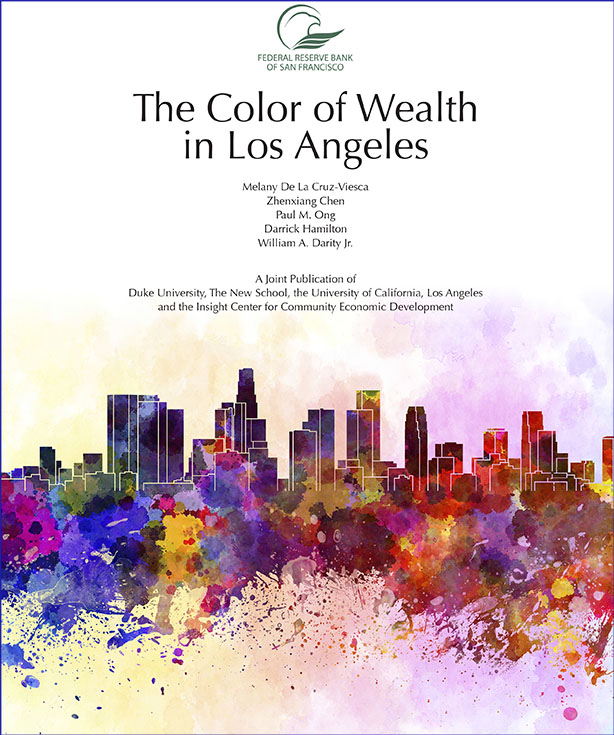 |
The Color of Wealth in Los Angeles
|
 |
||
|
Webinars A three part webinar series with advocates, practitioners, and researchers who are working to close the racial wealth divide. Listen to recordings and view slide presentations. Join the Conversation: #NOTcrazyrichAsians |
||
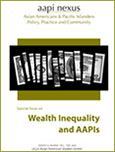 |
Read the Editors' Note: Asian American and Pacific Islander Wealth Inequality Browse the Table of Contents (Adobe PDF Document) View the Abstracts (AAPI Nexus Online) Access Table of Contents and Full Article Text (UCLA Journals Online) |
 |
Welcome back to the third episode of the Race and Wealth Podcast. Our host Dedrick Asante-Muhammad, sits down with Melany De La Cruz, Assistant Director at the UCLA Asian American Studies Center. They discuss Melany's work at the Asian American Studies Center and her beginnings in studying Racial Wealth Inequality. The conversation then moves to a discussion of the Color of Wealth series, which just released a report of Los Angeles. Finally, Dedrick and Melany discuss the Asian American Pacific Islander Nexus Journal's special issue, which deals with Wealth Inequality. [more...] |
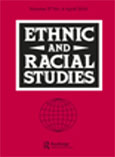 |
By Randall Akee, Sue K. Stockly, William Darity Jr, Darrick Hamilton & Paul Ong
Abstract: We analyse survey data from the National Asset Scorecard for Communities of Color Project for asset accumulation in Tulsa, Oklahoma. The survey oversampled the American Indian/Alaska Native population in order to examine asset accumulation among a variety of racial, ethnic and legal status groups. We examine differences in asset accumulation across tribal members from a variety of American Indian tribes. Additionally, we make comparisons across those that are tribally enrolled to those that are not tribally enrolled. We find substantial difference across tribal affiliation in our data once we disaggregate the category of American Indian. Our research adds a new dimension to the literature examining differences in wealth accumulation by race and political status for a little-studied group. Specifically, we examine the intersection of race and legal status in wealth and asset accumulation. Access the Article in the Ethnic and Racial Studies Journal (Adobe PDF Document) |
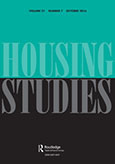 |
By Deirdre Pfeiffer, Karna Wong, Paul Ong & Melany De La Cruz-Viesca Housing Studies Journal Access the Article in the Housing Studies Journal (Online) |
|
|
By Paul M. Ong, Chhandara Pech, and Deirdre Pfeiffer California Policy Options, 2014, an annual publication of the UCLA Luskin School of Public Affairs and the Lewis Center for Regional Policy Studies. Access the Full Article Text (Online) |
 |
Dream Home Resource Center, Olga Koumoundouros's most recent investigation of home ownership, addresses the immateriality of real estate transactions and the shift from home as emblem of the American dream to house as commodity. Research findings were part of the interactive exhibit/installation at the Armand Hammer Museum of Art and Culture Center at UCLA. For more information on the exhibit, please visit the exhibit online at the Hammer Museum. Maps and data presented at the Hammer Museum explored the temporal and spatial patterns of foreclosures in urban Los Angeles County neighborhoods from 2007-2013. These maps illustrated the spatial relationship of subprime lending and foreclosure rates which disproportionately affected minority communities. The map presentation can be viewed at: https://www.youtube.com/watch?v=jTgS4JdKlMs Forclosures and L.A. Neighborhoods: The posters can be downloaded at UCLA Luskin's Center for the Study of Inequality (Adobe Acrobat Document). |
"Pathways to Trouble: Homeowners and the Foreclosure Crisis in Los Angeles Ethnic Communities," a report by the UCLA Asian American Studies Center and UCLA Center for the Study of Inequality examines the diverse circumstances and conditions that shaped homeowners' experiences of default and foreclosure in Los Angeles. The report not only uncovers why immigrants and communities of color were at higher risk of foreclosure, but it also reveals strategies to cope and resolve homeowners' housing and financial issues, which are critical for better understanding the economic mobility of these populations. The report concludes with recommendations to help troubled families and the non-profits that serve them.
|
While much research exists on African Americans and Latinos after the housing crisis in 2007, much less is known about the Asian American experience particularly as it relates to foreclosure and housing burden. This study takes a quantitative case study approach examining Asian Americans in one region of Los Angeles County. Utilizing data from the Census, Home Mortgage Foreclosure Data, and DataQuick, we provide a more comprehensive picture of the Asian American housing experience before, during and after the housing boom in 2005. Findings show that Asian Americans' decline in homeownership could not be explained by foreclosure. In fact, Asian Americans may have avoided foreclosure in this region using higher down payments, avoiding subprime loans, and loans with variable interest. A potential cost of these actions is higher housing burden, which is closely related to default and foreclosure.
|
Narrative Report:
As pensions decline, health and educational costs rise, home values and savings accounts shrink, and benefits under Social Security continue to be severely threatened and limited, asset-building strategies are needed now more than ever to close the racial wealth gap. In the aftermath of the Great Recession and foreclosure crisis, the goal of this report was to provide critical socioeconomic quantitative information and statistics on Asian Americans that would be useful for the BESOL state and regional asset-building coalitions in: 1) Developing their policy agenda, 2) Assisting with outreach by identifying where Asian American populations are concentrated residentially and geographically, which can perhaps lead to the strengthening of coalition efforts, and 3) Understanding cultural and linguistic barriers unique to Asian Americans, especially the Asian ethnic subgroups that are most in need.
The quantitative data is meant to be used in relation with other sources of knowledge (qualitative, historical, voices from community leaders etc.) in order to offer fuller and more nuanced explanations. It is vital that we use multiple frameworks (research, organizing, advocacy, etc.) as we think about how to improve access and knowledge of asset-building programs and practices for underserved communities of color and end the widening racial wealth divide.
Technical Report:
The Technical Report is a supplement to the state and regional narrative reports prepared for the Ford Foundation's Building Economic Security Over a Lifetime (BESOL) Initiative. It is divided into three sections: (1) Methodology, (2) Definitions, and (3) Data Tables and Charts. The demographic data tables and charts are provided at the State and Metropolitan Statistical Areas (MSAs) level and include the following:
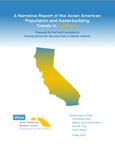 |
|
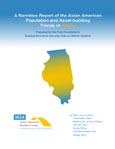 |
|
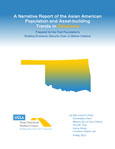 |
|
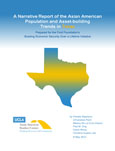 |
|
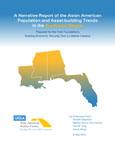 |
|
East San Gabriel Valley Report
A separate intensive case study report was produced on the East San Gabriel Valley, in Los Angeles County, a neighborhood that has a mix of large population concentrations of Asian Americans and Non-Hispanic Whites. The report examines the impact of the foreclosure crisis on Asian American asset building, in particular the gains and losses through homeownership. Similar to other racial groups, homeownership makes up a large share of assets, and any changes may indirectly help us understand overall declines in net worth for racial minorities. The East San Gabriel Valley case study analysis utilized data from Los Angeles County assessor's office (parcel data), American Community Survey (PUMS sample), DataQuick (purchases, defaults, and foreclosures), and Home Mortgage Disclosure Act (lending information).
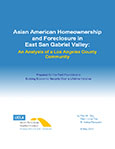 |
|
This work is licensed under a Creative Commons Attribution 4.0 International License.